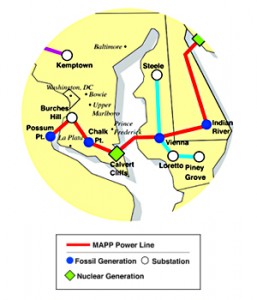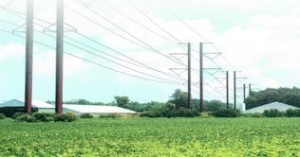PEPCO is Zack’s “Bear of the Day!”
June 30th, 2010
(Just looking for an excuse to trot out that pole-dancing bear!)
BEAR ALERT!!! Couldn’t happen to a more deserving company — Google Alert just sent me notice that one of my “favorite” companies is Zack’s “Bear of the Day!” Why? Well, they specifically mention that MAPP transmission project that just doesn’t seem to be needed:
Bear Of The Day: Pepco Holdings, Inc. (POM)
Check out their individual reports for other utilities and industries. Let’s hear it for the capital market crash — ain’t the depression grand?!?!?!
How bad is it? First the Indian River to Salem leg is cancelled, then the whole thing is suspended… and here we sit… waiting… and we all know that PJM demand is down the toilet.
Click here for the last RTEP Mid-Atlantic subcommittee presentation — see if you can download it!
And they opened an office and now they announce:
Meanwhile, we wait for the RTEP that just won’t come out. How delayed can it get? I guess all that backwards engineering to demonstrate need takes a while, eh?
600 show up for Delmarva Power transmission line meeting
February 6th, 2009
WOW! “Nearly 600” show up for a meeting about transmission. Good, Delmarva deserves that kind of response for their threat to ram the Mid-Atlantic Power Pathway transmission line through Maryland and Delaware to New Jersey. They’re so desperate that they’re threatening “rolling blackouts:”
More transmission lies. WDMT caught them making the same threats:
Delmarva Power Community and Communications Coordinator Matt Likovich said, “There have been projections that if we don’t do something to improve our infrastructure… we could be faced with rolling blackouts by the year 2011.”
Threatening rolling blackouts, saying that’ll happen by 2011, so we need to build this line by 2013… yeah… sure… whatever… Get a grip, guys, we are not that stupid, we’re not buying your threats — it is SO naughty to do that.
Power lines would relieve congestion
Transmission – Mid-Atlantic Power Pathway
February 2nd, 2009
Delmarva Power has been hosting meetings about its proposed Mid-Atlantic Power Pathway. The next meeting is:
Wednesday, February 4 @ 6 p.m.
Millsboro Civic Center
322 Wilson Highway
This is an electrical superhighway through Delaware, the map makes that much clear.
What’s interesting is that Rep. Tom Carper seems to be taking an enlightened and informed position on this:
Today, there’s a long piece in the News Journal about it, with the above quote from Carper:
Power-line plan stirs environment fears
Bluewater Wind hails pathway for clean energy




